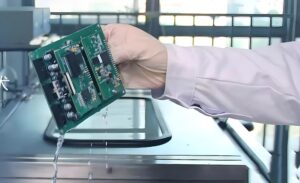With the development of PCBA design towards miniaturization, device size and spacing between devices have become smaller. Failure faults such as short circuits and electrochemical migration caused by residual small particles have attracted widespread attention. In order to adapt to market trends and improve product reliability, more and more SMT manufacturers are paying attention to PCBA cleaning.
PCBA cleaning is divided into two stages: SMT (Surface Mount Technology) and THT (Plug in Technology). Through cleaning, the accumulation of surface contaminants on the product during processing can be removed, reducing the risk of surface contamination and reliability reduction. The factors that affect the stability of PCBA cleaning process mainly include: cleaning objects, cleaning equipment, cleaning agents, and process control.
1. Cleaning objects
The main cleaning objects are solder paste and residual flux, as well as large particle contamination, oil stains, and sweat stains on the surface of circuit boards. The material properties and surface conditions of different PCBAs also vary.
2. Cleaning agents
Choosing specialized cleaning agents is very important, and material compatibility is often overlooked but crucial in the cleaning process. Incompatibility between cleaning agents and cleaning objects, as well as between cleaning agents and cleaning equipment, may lead to product scrap or blockage of equipment pipelines. As a chemical, cleaning solution poses a risk of personal injury and economic loss due to improper operation.
3. Cleaning equipment
A complete cleaning process usually includes three steps: cleaning, rinsing, and drying. During the cleaning process, the cleaning agent and pollutants come into contact with each other, and the cleaning agent separates the pollutants from the surface of the cleaning object; The rinsing and drying process mainly involves further removal of pollutants and ensuring that there is no residual cleaning agent on the surface of the components.
4. Cleaning process control
As the number of cleaning cycles increases, the concentration of cleaning solution is often affected by various factors during use, such as residues in the liquid, evaporation of the liquid, and addition of deionized water, resulting in fluctuations in its concentration. So in the circuit cleaning process, the monitoring of concentration is directly related to the stability of the cleaning effect.
















